Related Research Articles
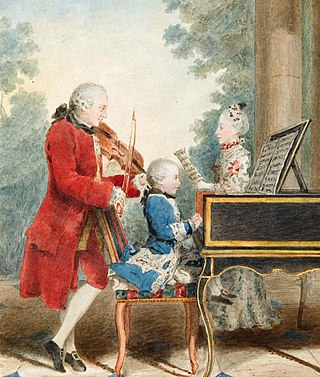
The Classical period was an era of classical music between roughly 1750 and 1820.
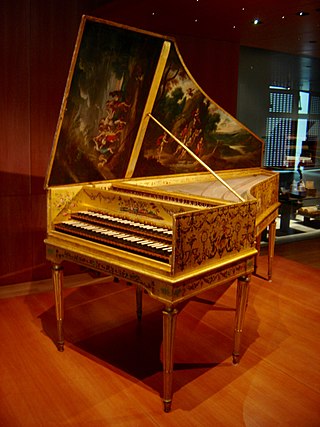
A harpsichord is a musical instrument played by means of a keyboard. This activates a row of levers that turn a trigger mechanism that plucks one or more strings with a small plectrum made from quill or plastic. The strings are under tension on a soundboard, which is mounted in a wooden case; the soundboard amplifies the vibrations from the strings so that the listeners can hear it. Like a pipe organ, a harpsichord may have more than one keyboard manual, and even a pedal board. Harpsichords may also have stop buttons which add or remove additional octaves. Some harpsichords may have a buff stop, which brings a strip of buff leather or other material in contact with the strings, muting their sound to simulate the sound of a plucked lute.

Trevor David Pinnock is a British harpsichordist and conductor.
Hendrik "Henk" Bouman is a Dutch harpsichordist, fortepianist, conductor and composer of music written in the baroque and classical idioms of the 17th and 18th century.
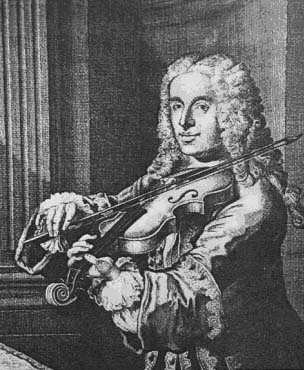
Francesco Maria Veracini was an Italian composer and violinist, perhaps best known for his sets of violin sonatas. As a composer, according to Manfred Bukofzer, "His individual, if not subjective, style has no precedent in baroque music and clearly heralds the end of the entire era", while Luigi Torchi maintained that "he rescued the imperiled music of the eighteenth century", His contemporary, Charles Burney, held that "he had certainly a great share of whim and caprice, but he built his freaks on a good foundation, being an excellent contrapuntist". The asteroid 10875 Veracini was named after him.

Georg Christoph Wagenseil was an Austrian composer.
A harpsichord concerto is a piece of music for an orchestra with the harpsichord in a solo role. Sometimes these works are played on the modern piano. For a period in the late 18th century, Joseph Haydn and Thomas Arne wrote concertos that could be played interchangeably on harpsichord, fortepiano, and pipe organ.
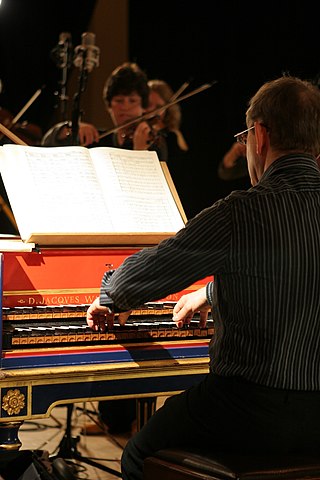
A harpsichordist is a person who plays the harpsichord. Harpsichordists may play as soloists, as accompanists, as chamber musicians, or as members of an orchestra, or some combination of these roles. Solo harpsichordists may play unaccompanied sonatas for harpsichord or concertos accompanied by orchestra. Accompanist harpsichordists might accompany singers or instrumentalists, either playing works written for a voice and harpsichord or an orchestral reduction of the orchestra parts. Chamber musician harpsichordists could play in small groups of instrumentalists, such as a quartet or quintet. Baroque-style orchestras and opera pit orchestras typically have a harpsichordist to play the chords in the basso continuo part.
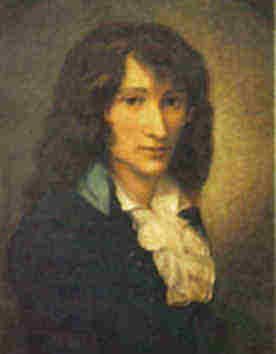
Johann Gottfried Müthel was a German composer and noted keyboard virtuoso. Along with C.P.E. Bach, he represented the Sturm und Drang style of composition.
Georg Matthias Monn was an Austrian composer, organist and music teacher whose works were fashioned in the transition from the Baroque to Classical period in music.
Vox Sæculorum is an international society of contemporary composers writing in the Baroque style established in 2006. Vox Sæculorum was the primary focus of a feature-length article on period baroque composition written by Grant Colburn and published in the Summer issue of Early Music America Magazine.
The keyboard concertos, BWV 1052–1065, are concertos for harpsichord, strings and continuo by Johann Sebastian Bach. There are seven complete concertos for a single harpsichord, three concertos for two harpsichords, two concertos for three harpsichords, and one concerto for four harpsichords. Two other concertos include solo harpsichord parts: the concerto BWV 1044, which has solo parts for harpsichord, violin and flute, and Brandenburg Concerto No. 5 in D major, with the same scoring. In addition, there is a nine-bar concerto fragment for harpsichord which adds an oboe to the strings and continuo.

The Sonata in E major for flute and basso continuo is a sonata for transverse flute and figured bass composed by J. S. Bach in the 1740s. It was written as the result of a visit in 1741 to the court of Frederick the Great in Potsdam, where Bach's son Carl Philipp Emanuel had been appointed principal harpsichordist to the king the previous year. It was dedicated to Michael Gabriel Fredersdorf, the king's valet and private secretary, who, like the king, was an amateur flautist.
Giovanni Benedetto Platti was an Italian Baroque composer and oboist.
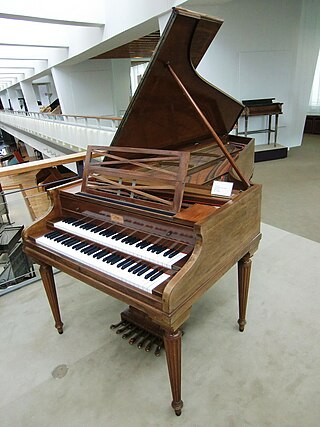
The harpsichord was largely obsolete, and seldom played, during a period lasting from the late 18th century to the early 20th. The instrument was successfully revived during the 20th century, first in an ahistorical form strongly influenced by the piano, then with historically more faithful instruments. The revival was the joint work of performers, builders, and composers who wrote new harpsichord pieces. However the harpsichord never completely disappeared from the public eye as it was used through the mid-19th century for basso continuo because despite its low volume, it had considerable power to "cut through" the orchestra. The earliest revival efforts began in the mid-19th century due to its increasingly infrequent usage and there was concern that the instrument could become a forgotten relic of the past.

The Handel organ concertos, Op. 4, HWV 289–294, are six organ concertos for chamber organ and orchestra composed by George Frideric Handel in London between 1735 and 1736 and published in 1738 by the printing company of John Walsh. Written as interludes in performances of oratorios in Covent Garden, they were the first works of their kind for this combination of instruments and served as a model for later composers.

Anthony Newman is an American classical musician. While mostly known as an organist, Newman is also a harpsichordist, pedal harpsichordist, pianist, fortepianist, composer, conductor, writer, and teacher. A specialist in music of the Baroque period, particularly the works of Johann Sebastian Bach, Newman considers himself to have played an important role in the movement towards historically informed performance. He has collaborated with noted musicians such as Kathleen Battle, Julius Baker, Itzhak Perlman, Eugenia Zukerman, Jean-Pierre Rampal, Leonard Bernstein, Michala Petri and Wynton Marsalis for whom he arranged and conducted In Gabriel’s Garden, the most popular classical record of 1996.
Daniel Robert Waitzman is an American flutist and composer.
Pieter-Jan Belder is a Dutch instrumentalist in historically informed performance, playing recorder, harpsichord and fortepiano. He founded the ensemble Musica Amphion for recordings and performances.
References
- Early Music America, Summer 2007.
- Harpsichord and Fortepiano, Volume 11, No.2
- Harpsichord and Fortepiano, Volume 12, No.1
- Early Music America, Winter 2008.
- Harpsichord and Fortepiano, Volume 13, No.2